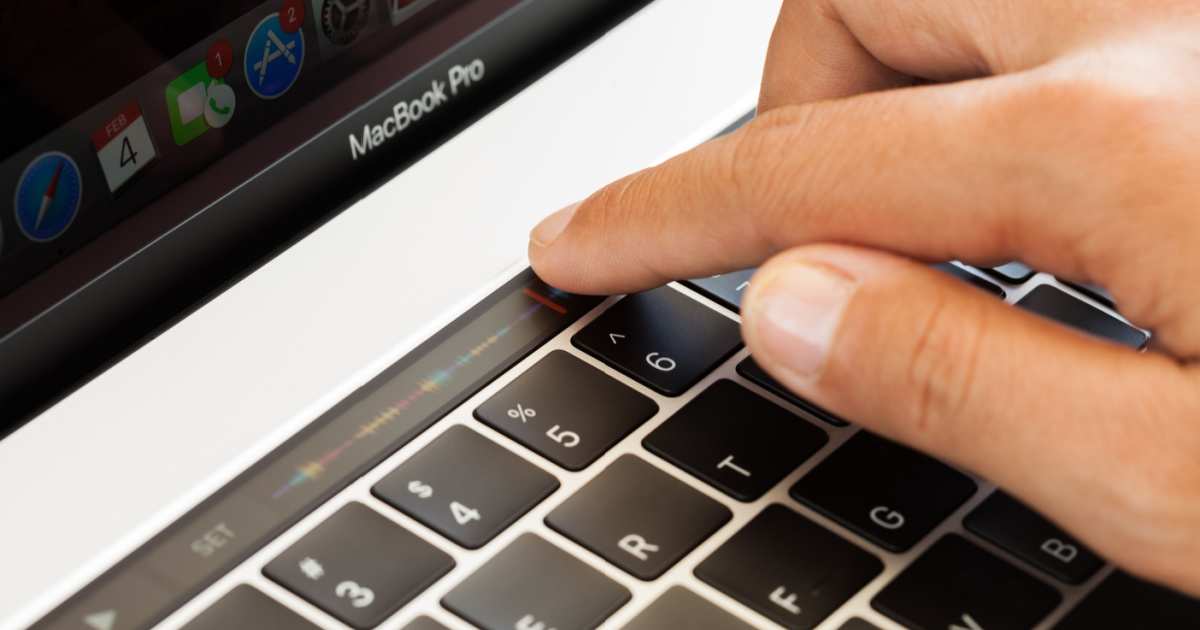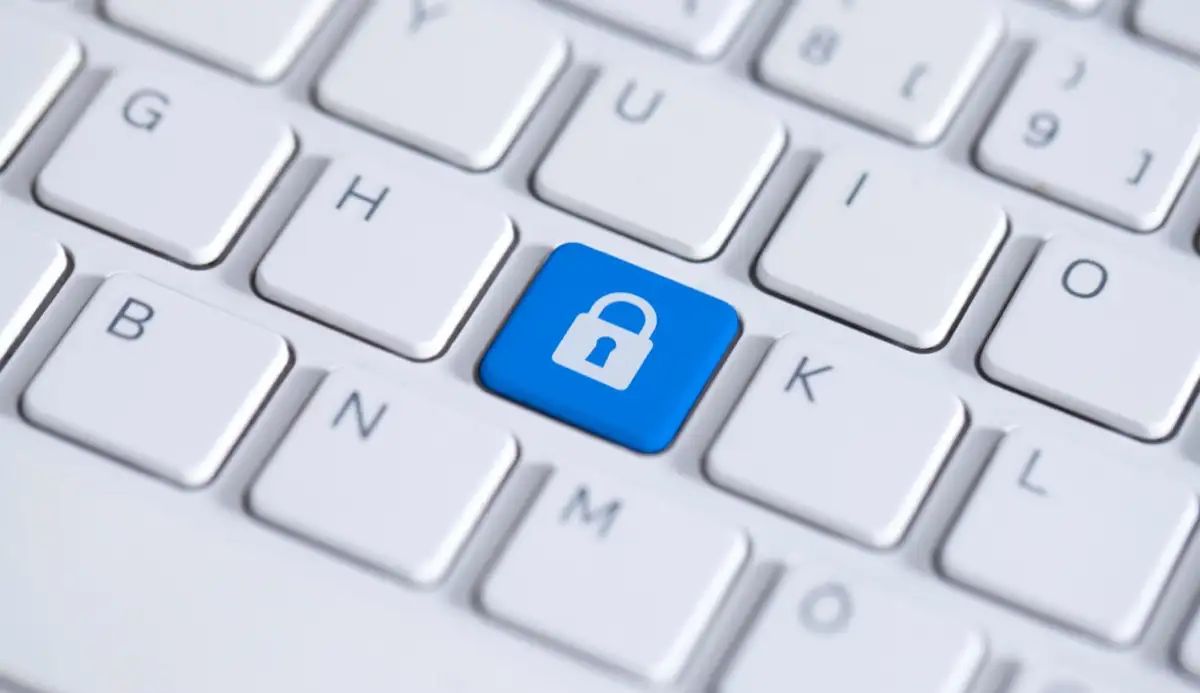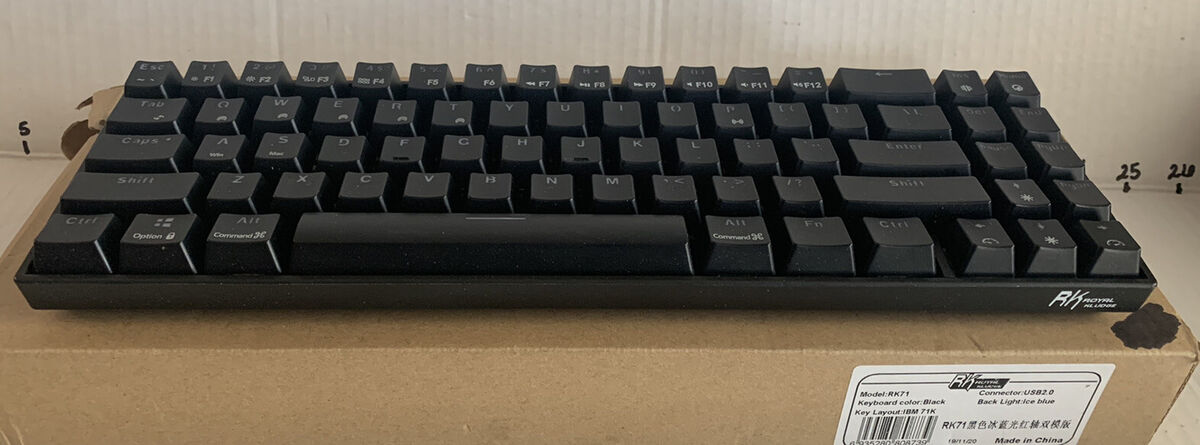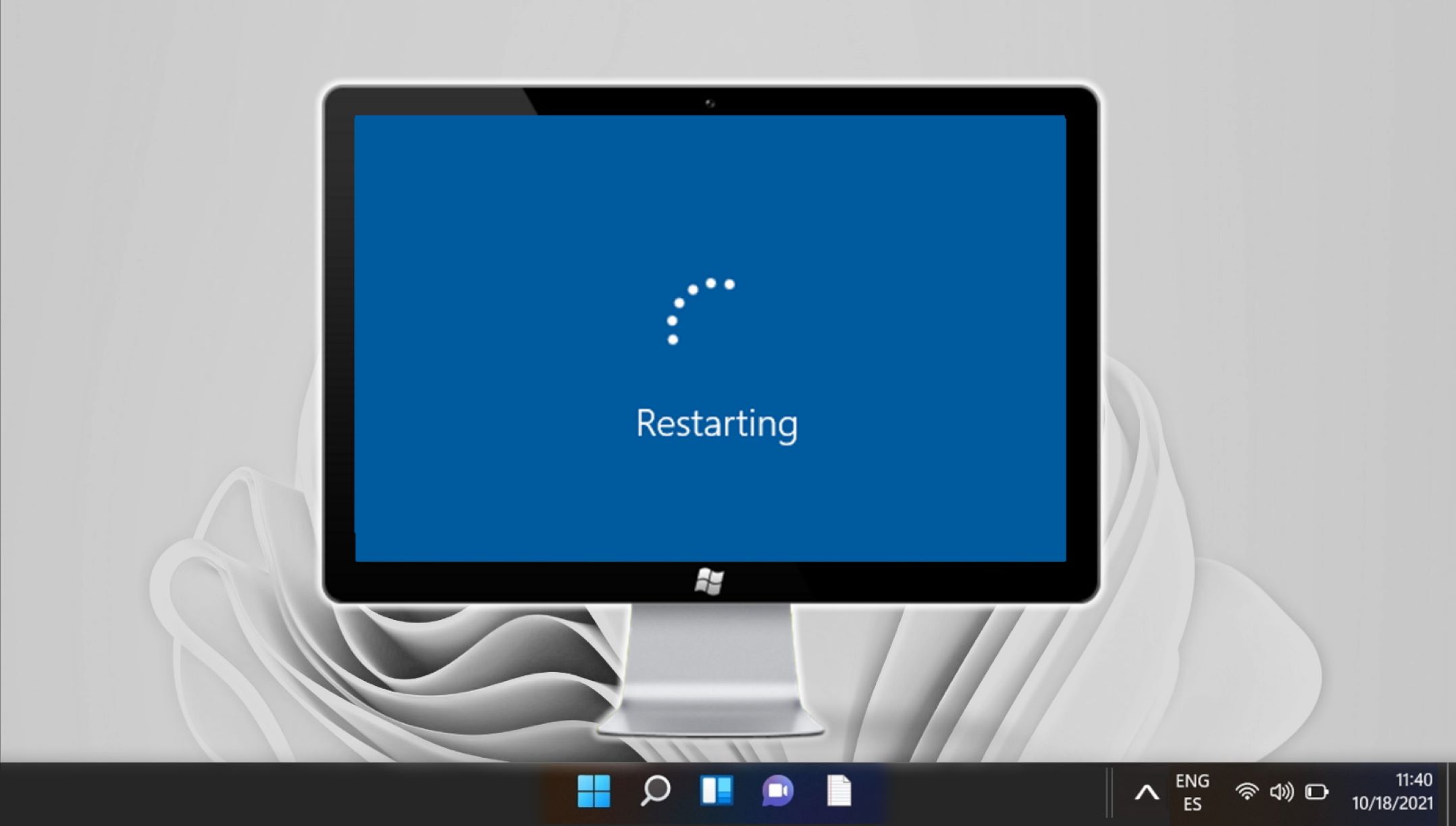Why Restarting Your Computer with the Keyboard?
Restarting your computer is a common troubleshooting technique that can help resolve various software issues. While most people are familiar with using the mouse to access the restart option, did you know that you can restart your computer using just the keyboard? This can be particularly useful if your mouse is not responding or if you prefer using keyboard shortcuts for efficiency.
There are several advantages to restarting your computer with the keyboard. Firstly, it allows for a quicker and more convenient way to restart your system. Instead of navigating through menus and options with the mouse, you can simply press a combination of keys to initiate the restart process. This saves time and can be especially beneficial if you frequently need to restart your computer.
Furthermore, restarting your computer with the keyboard can be a helpful solution if your mouse is not functioning correctly. In some cases, the mouse cursor may be unresponsive or frozen, making it difficult to navigate and click on the restart option. By using keyboard shortcuts, you can bypass this issue and restart your computer seamlessly.
Another advantage of restarting with the keyboard is that it can be a lifesaver in situations where your computer freezes or becomes unresponsive. Sometimes, when your computer encounters an issue, the operating system may stop responding completely. In such scenarios, using the keyboard shortcuts to initiate a restart can help you regain control and address the problem.
Overall, restarting your computer with the keyboard provides a convenient, efficient, and reliable method for resolving software issues. Whether you want to save time, overcome mouse-related problems, or regain control of an unresponsive system, using keyboard shortcuts to restart your computer can be a valuable technique to have in your troubleshooting arsenal.
How to Use Keyboard Shortcuts to Restart Your Computer
If you are ready to give keyboard shortcuts a try and restart your computer without touching the mouse, here are several shortcuts you can use:
- Ctrl + Alt + Delete: This popular keyboard shortcut brings up the Windows Security screen. From there, you can select the “Restart” option to reboot your computer. This shortcut is especially useful if your computer is frozen or unresponsive, as it can force a restart.
- Windows Key + X: Pressing the Windows key and the X key simultaneously will open a menu known as the “Power User Menu.” From this menu, you can select the “Shut down or sign out” option and then choose “Restart” to initiate a restart.
- Alt + F4: While this keyboard shortcut is typically associated with closing windows, it can also be used to restart your computer. Pressing Alt and F4 together will bring up the shut down Windows dialog box. From there, you can use the arrow keys to select the “Restart” option and press Enter.
In addition to these commonly used shortcuts, there are other methods to restart your computer using keyboard commands specific to your operating system. Here are a few examples:
- Command Prompt: In Windows, you can open the Command Prompt by pressing Windows key + R and then typing “cmd.” In the Command Prompt window, type “shutdown /r” and press Enter to restart your computer.
- PowerShell: Similarly, you can open PowerShell in Windows by pressing Windows key + R and then typing “powershell.” In the PowerShell window, enter the command “Restart-Computer” and press Enter to initiate a restart.
- Task Manager: In Windows, you can quickly access the Task Manager by pressing Ctrl + Shift + Esc. Once the Task Manager window opens, navigate to the “File” menu and select “Run new task.” Type “shutdown /r” in the “Create new task” window and hit Enter to restart your computer.
If you are a Mac user, here are a few keyboard shortcuts specifically designed for macOS:
- Apple Menu: Click the Apple menu in the top left corner of the screen and select the “Restart” option to initiate a system restart.
- Command + Ctrl + Eject/Power Button: Pressing Command, Ctrl, and the Eject (or Power) button simultaneously will bring up a dialog box with the restart option. Selecting “Restart” will commence the restart process.
- Terminal: Open Terminal by navigating to “Applications” > “Utilities” > “Terminal” and type “sudo shutdown -r now” to restart your Mac.
By familiarizing yourself with these keyboard shortcuts, you can swiftly and efficiently restart your computer without relying on the mouse. Experiment with these shortcuts to find which ones work best for you and minimize interruption to your workflow.
Restart Your Computer with the Ctrl + Alt + Delete Shortcut
One of the most well-known keyboard shortcuts for restarting a computer is Ctrl + Alt + Delete. This shortcut has been ingrained in Windows users’ collective memory for many years, and it remains a reliable method for initiating a restart.
To use the Ctrl + Alt + Delete shortcut, follow these simple steps:
- Ensure that you are logged into your Windows account.
- Press the Ctrl + Alt + Delete keys simultaneously. You can find the Ctrl and Alt keys situated at the lower-left corner of your keyboard, while the Del (Delete) key is typically located in the upper-right corner.
- After pressing these keys together, you will be directed to the Windows Security screen. Here, you will find various options such as Lock, Switch User, Sign out, and Task Manager.
- Click on the power icon located in the bottom-right corner of the screen. A drop-down menu will appear with options like Sleep, Shut down, and Restart.
- Select the “Restart” option.
Using Ctrl + Alt + Delete to restart your computer is particularly useful in situations where your computer becomes unresponsive or frozen. Pressing these keys can initiate a forced restart, helping you regain control over your system.
It’s important to note that the Ctrl + Alt + Delete shortcut may work slightly differently depending on the version of Windows you are using. In Windows 10, for example, pressing these keys will bring up the Windows Security screen directly, where you can select the Restart option from the power icon.
By utilizing the Ctrl + Alt + Delete shortcut, you can quickly and effortlessly restart your computer without needing to navigate through menus or use the mouse. It’s a reliable method that has stood the test of time and continues to be an essential tool for Windows users.
Restart Your Computer with the Windows Key + X Shortcut
If you’re looking for an alternative keyboard shortcut to restart your computer in Windows, the Windows Key + X shortcut is worth considering. This shortcut opens the Power User Menu, which provides quick access to various Windows tools and functions, including the option to restart your computer.
To use the Windows Key + X shortcut to restart your computer, follow these steps:
- Ensure you are logged into your Windows account.
- Press the Windows key and the X key simultaneously. You can find the Windows key located on the lower-left corner of your keyboard, often with the Windows logo on it. The X key is typically situated right next to it.
- As soon as you press Windows Key + X, a context menu known as the Power User Menu will appear in the bottom left corner of your screen.
- Using the arrow keys on your keyboard, navigate to the “Shut down or sign out” option in the Power User Menu.
- Press Enter to expand the submenu and reveal additional options, including “Restart”.
- Highlight the “Restart” option using the arrow keys and press Enter to initiate the restart process.
The Windows Key + X shortcut is incredibly convenient, as it provides quick access to essential system functions without the need to navigate through menus using the mouse. This shortcut is especially useful if you prefer using the keyboard for efficiency or if your mouse is not functioning correctly.
It’s important to note that the availability and functionality of the Power User Menu may vary depending on the version of Windows you are using. In some older versions of Windows, the Power User Menu may not appear when pressing Windows Key + X. However, in Windows 8 and above, this shortcut is consistently supported.
By using the Windows Key + X shortcut, restarting your computer becomes a simple and streamlined process. This convenient keyboard shortcut saves you time and effort, allowing you to quickly address any issues and get back to work or play on your Windows machine.
Restart Your Computer with the Alt + F4 Shortcut
Another keyboard shortcut that can be used to restart your computer is Alt + F4. While this shortcut is commonly associated with closing windows, it can also be utilized to initiate a restart on your system.
To restart your computer using the Alt + F4 shortcut, follow these steps:
- Make sure you have closed all open programs and windows, or you can minimize them to access the desktop.
- Click on the desktop or press the Windows key + D to directly access the desktop.
- Ensure that no program or window has focus, meaning nothing is selected or active on the screen.
- Press and hold the Alt key located on the lower-left or lower-right corner of your keyboard.
- While holding the Alt key, press the F4 key located at the top row of your keyboard.
- This action will bring up the “Shut Down Windows” dialog box.
- Use the arrow keys on your keyboard to navigate to the “Restart” option within the dialog box.
- Press Enter to initiate the restart process.
The Alt + F4 shortcut provides an efficient way to restart your computer, especially if you are already on the desktop or have closed all open programs. Using this keyboard shortcut saves you from navigating through menus or accessing additional options.
It’s important to note that the Alt + F4 shortcut may not work if a specific window or program has focus. Make sure the desktop or an inactive area of the screen is selected before using this shortcut.
This shortcut is particularly useful when other methods like Ctrl + Alt + Delete or the Windows Key + X shortcut are not accessible or not yielding the desired results. Additionally, if you prefer using keyboard shortcuts rather than relying on the mouse, Alt + F4 provides a quick and effective way to restart your computer.
Remember, when using the Alt + F4 shortcut to restart your computer, ensure you have correctly saved any unsaved work in open programs or documents to prevent data loss.
Restart Your Computer Using Command Prompt
If you prefer using the command line interface or need to restart your computer in a specific situation, you can utilize Command Prompt to initiate a restart. This method provides a direct and efficient way to restart your computer without the need for graphical interfaces or mouse interactions.
To restart your computer using Command Prompt, follow these steps:
- Press the Windows key + R on your keyboard to open the Run dialog box.
- Type “cmd” into the Run dialog box and press Enter. This will launch the Command Prompt.
- In the Command Prompt window, type the command “shutdown /r” (without the quotation marks) and press Enter.
- Windows will initiate a system restart, and your computer will reboot.
The shutdown command followed by the /r flag instructs Windows to restart the computer. By using Command Prompt, you have more control over the restart process and can customize the command if needed. For example, you can add a specific delay or specify a reason for the restart.
Using Command Prompt to restart your computer is especially handy in scenarios where you need to automate the process, execute the command remotely, or troubleshoot issues that may prevent you from using graphical interfaces.
It’s worth noting that using Command Prompt requires some basic knowledge of commands and their proper usage. Therefore, exercise caution and make sure to enter the correct command to avoid any unintended consequences.
By leveraging Command Prompt, you have a powerful tool at your fingertips to restart your computer quickly and efficiently. Whether you need to automate the process or troubleshoot specific issues, using Command Prompt provides a versatile and effective method to restart your computer with ease.
Restart Your Computer Using PowerShell
If you are a Windows user and prefer using PowerShell over Command Prompt, you can also utilize PowerShell to restart your computer. PowerShell is a more advanced command-line interface that offers additional functionality and flexibility.
To restart your computer using PowerShell, follow these steps:
- Press the Windows key + R on your keyboard to open the Run dialog box.
- Type “powershell” into the Run dialog box and press Enter. This will launch the PowerShell interface.
- In the PowerShell window, type the command “
Restart-Computer” (without the quotation marks) and press Enter. - PowerShell will initiate a system restart, and your computer will reboot.
The Restart-Computer cmdlet in PowerShell simplifies the process of restarting your computer. It provides a user-friendly and intuitive way to perform the restart operation without the need for complex commands or flags.
Using PowerShell to restart your computer offers additional advantages compared to other methods. For instance, you can remotely execute the restart command on other devices connected to your network, making it a useful tool for system administrators managing multiple computers.
Furthermore, PowerShell provides various parameters and options that allow you to customize the restart process. For example, you can specify a specific delay before the restart, force the restart even if there are open applications, or initiate a restart on a remote computer.
When using PowerShell, it’s essential to have a basic understanding of PowerShell cmdlets and their usage. This allows you to leverage the full power and capabilities of PowerShell to execute commands efficiently and effectively.
By using PowerShell, you have a robust and flexible tool at your disposal to restart your computer. Whether you need to restart your own machine or manage multiple computers remotely, PowerShell offers a convenient and powerful solution for restarting your computer with ease.
Restart Your Computer Using Task Manager
If you’re experiencing issues with your computer or your system becomes unresponsive, you can use the Task Manager to efficiently restart your computer. Task Manager is a powerful utility that allows you to monitor and manage running processes, including initiating a restart.
To restart your computer using Task Manager, follow these steps:
- Press Ctrl + Shift + Esc on your keyboard to open the Task Manager.
- If the Task Manager opens in its compact mode, click on “More details” to expand it.
- In the Task Manager window, navigate to the “File” menu in the top left corner.
- From the “File” menu, select the option that says “Run new task” or “Run new task (Administrator)”.
- In the “Create new task” window that appears, type “shutdown /r” (without the quotation marks) into the text field.
- Click the “OK” or “Enter” button to initiate the restart process.
Using Task Manager to restart your computer is particularly useful when your screen is frozen or unresponsive, as Task Manager provides a reliable way to force a restart. It utilizes the shutdown command with the /r flag to restart the computer.
Task Manager offers additional features that can be helpful for troubleshooting and resolving issues. For example, you can use Task Manager to end unresponsive applications or processes before initiating the restart, thus potentially preventing any conflicts during the restart process.
Additionally, Task Manager provides insights into resource usage, allowing you to identify any programs or processes that might be causing system slowdowns or performance issues. This knowledge can be beneficial for resolving recurring issues or optimizing your system after a restart.
By using Task Manager, you have a comprehensive tool that not only enables you to restart your computer but also provides valuable insights and control over running processes. It is a reliable and efficient way to handle system issues and regain control of an unresponsive computer.
Restart Your Computer Using the Windows Start Menu
If you prefer a more intuitive and graphical approach to restarting your computer, the Windows Start Menu provides a simple and accessible option. With just a few clicks, you can quickly initiate a restart without the need for keyboard shortcuts or command inputs.
To restart your computer using the Windows Start Menu, follow these steps:
- Click on the “Start” button located in the bottom-left corner of your screen. Alternatively, press the Windows key on your keyboard.
- From the Start Menu, click on the power icon, typically represented by a circle with a vertical line on the right side.
- A small menu will appear with options such as Sleep, Shut down, and Restart.
- Select the “Restart” option from the menu.
Using the Windows Start Menu to restart your computer provides a user-friendly and familiar approach to the process. This method eliminates the need for memorizing keyboard shortcuts or typing commands, making it ideal for those who prefer a more visual interface.
In addition to the straightforward restart option in the Start Menu, Windows also provides other power-related options such as Sleep and Shut down. The Start Menu provides the flexibility to choose the action that best suits your needs at any given time.
The accessibility and consistency of the Windows Start Menu across different versions of Windows make this method widely accessible for users. Whether you’re on Windows 7, Windows 8, or Windows 10, you can rely on the Start Menu to execute a restart with ease.
By utilizing the Windows Start Menu to restart your computer, you can quickly and efficiently perform necessary system maintenance or resolve any software-related issues. It’s a convenient and familiar method that simplifies the process and keeps your computer running smoothly.
Restart Your Computer Using the Apple Menu (for Mac Users)
Mac users can easily restart their computers using the Apple Menu, a centralized location in the Mac operating system that provides access to various functions and settings. The Apple Menu not only allows you to restart your computer but also provides access to other essential features.
To restart your computer using the Apple Menu, follow these steps:
- Click on the Apple icon located in the top-left corner of your screen. This will open the Apple Menu.
- From the drop-down menu, select the “Restart” option.
By selecting the “Restart” option from the Apple Menu, you initiate the restart process for your Mac computer. The menu allows you to perform a clean restart, which closes all applications and processes gracefully before restarting the system.
The Apple Menu in Mac provides a user-friendly and intuitive approach to restarting your computer. It eliminates the need to use keyboard shortcuts or navigate through various settings and options, simplifying the restart process.
In addition to restarting your computer, the Apple Menu offers other handy features for Mac users. These features include accessing System Preferences to adjust settings, opening essential applications, accessing recent documents, and more.
The Apple Menu is consistent across different versions of macOS, making it accessible to all Mac users regardless of the operating system version they are using.
Restarting your computer using the Apple Menu is a straightforward and convenient method that allows you to perform essential system maintenance, update settings, and troubleshoot issues. It serves as a central hub for accessing important functions and maintaining the smooth operation of your Mac.
Restart Your Computer Using the Command + Ctrl + Eject/Power Button (for Mac Users)
Mac users have an alternative keyboard shortcut to quickly restart their computers, specifically designed for convenience and efficiency. By using the Command + Control + Eject or Power button combination, you can initiate a restart without accessing menus or navigating through settings.
To restart your computer using the Command + Control + Eject or Power button shortcut, follow these steps:
- Ensure that you have saved any unsaved work and closed all open applications.
- Press and hold the Command (⌘) and Control (Ctrl) keys on your keyboard.
- While holding these keys, press the Eject button or the Power button on your Mac’s keyboard.
- A dialog box will appear asking if you want to restart your computer.
- Select the “Restart” option to proceed with the restart.
The Command + Control + Eject (or Power) button combination offers a convenient and efficient keyboard shortcut for Mac users to initiate a restart. This method is particularly useful if you need to restart your Mac quickly or if you prefer using keyboard shortcuts over accessing menus.
If your Mac model doesn’t have an Eject button, you can still use the keyboard shortcut by replacing Eject with the Power button. Press and hold the Command + Control + Power keys simultaneously to trigger the restart dialog box.
By utilizing this keyboard shortcut, Mac users can quickly restart their computers, saving time and streamlining the process. It provides a handy alternative to accessing menus or using the mouse, contributing to an efficient and smooth workflow.
Note that using the Command + Control + Eject/Power button shortcut invokes a graceful restart, allowing applications and processes to close properly before the system restarts. This helps avoid data loss and potential issues that may arise from forcibly shutting down the computer.
Whether you need to address a system issue or simply want to restart your Mac swiftly, the Command + Control + Eject/Power button shortcut offers a convenient and effective method to initiate a restart with just a few keystrokes.
Restart Your Computer Using Terminal (for Mac Users)
For Mac users who prefer using command-line interfaces, Terminal provides a powerful tool to perform various tasks, including restarting your computer. Using Terminal allows for a more granular and customizable approach to restarting your Mac, offering flexibility and control over the process.
To restart your computer using Terminal, follow these steps:
- Open the Terminal application on your Mac. You can find Terminal in the “Utilities” folder within the “Applications” folder, or open it through Spotlight by pressing Command + Space and typing “Terminal”.
- In the Terminal window, type the command “
sudo shutdown -r now” (without the quotation marks) and press Enter. - You will be prompted to enter your password. Note that the password input will not be visible as you type; this is a security measure. Press Enter once you’ve entered your password.
- The system will initiate a restart, closing all applications and processes gracefully.
Using Terminal to restart your computer provides a high level of control and customization. The shutdown command followed by the -r flag instructs your Mac to restart immediately. The sudo command is necessary to run the shutdown command with administrative privileges, as restarting the computer requires elevated access.
By utilizing Terminal, advanced users can leverage additional command-line options to tailor the restart process. For example, you can specify a specific time delay before restarting, provide a custom message to users before the restart, or execute the restart command on a remote Mac.
However, it’s crucial to exercise caution when using Terminal, as executing commands incorrectly can have unintended consequences or disrupt the normal functioning of your Mac. Ensure that you have a solid understanding of the commands you’re using and their potential outcomes before proceeding.
For advanced users, Terminal provides a powerful and flexible method to restart their Mac computers. It allows for customization, automation, and remote access capabilities, making it an essential tool for managing and troubleshooting Mac systems.
Frequently Asked Questions (FAQs)
1. Can I restart my computer without using the keyboard?
Yes, you can restart your computer without using the keyboard. In most operating systems, including Windows and macOS, you can access the restart option through graphical interfaces such as the Start Menu, Apple Menu, or Taskbar. These interfaces allow you to restart your computer with just a few mouse clicks.
2. What is the advantage of restarting my computer using keyboard shortcuts?
Restarting your computer using keyboard shortcuts offers several advantages. Firstly, it can be quicker and more efficient, saving you time by bypassing menus and mouse clicks. Additionally, keyboard shortcuts can be helpful when your mouse is not working correctly or if you prefer using the keyboard for accessibility reasons. Keyboard shortcuts also provide a way to restart your computer in situations where the graphical interface is not responding.
3. How often should I restart my computer?
There is no specific rule for how often you should restart your computer. However, it is generally recommended to restart your computer periodically to allow software updates, drivers, and system processes to take effect. Restarting your computer can also help resolve certain software issues or clear out temporary files that can impact performance. It is a good practice to restart your computer at least once a week or whenever you notice sluggishness or unusual behavior.
4. Will restarting my computer delete my files?
No, restarting your computer will not delete your files. When you initiate a restart, your operating system shuts down running processes and restarts the system. Your files and data remain intact throughout this process. However, it is always a good practice to save any unsaved work and close any open applications before restarting to avoid potential data loss.
5. Can I schedule my computer to restart automatically?
Yes, you can schedule your computer to restart automatically at a specific time using built-in tools or third-party software. In Windows, you can use the Task Scheduler to create a task that triggers a restart at your desired time. On macOS, you can use the Energy Saver settings to schedule a restart. Additionally, there are third-party applications available that offer more advanced scheduling options for automatic restarts.
Always ensure that you save any unsaved work and close applications before an automatic restart to prevent potential data loss.
Final Thoughts
Restarting your computer is a simple yet effective technique for resolving software issues, improving performance, and maintaining the overall health of your system. Whether you use keyboard shortcuts, graphical interfaces, or command-line tools, restarting your computer can provide a fresh start and help resolve various software-related problems.
Keyboard shortcuts offer a convenient way to restart your computer without the need to navigate through menus or use the mouse. They can save you time and effort, especially when you encounter unresponsive situations or prefer the efficiency of using keyboard commands.
Graphical interfaces, such as the Windows Start Menu and the Apple Menu, provide an intuitive and user-friendly approach to restarting your computer. These menus offer quick access to restart options, eliminating the need for keyboard commands or command-line interfaces.
Command-line tools like Command Prompt, PowerShell, and Terminal offer advanced users the ability to customize and fine-tune the restart process. These tools provide granular control and additional functionality, allowing for automation, remote management, and tailored restart commands.
Regardless of the method you choose, restarting your computer regularly helps keep your system running smoothly. It allows your computer to install updates, clear temporary files, and reset system processes, which can enhance performance and resolve potential issues.
Remember to save any unsaved work and close applications before initiating a restart to avoid data loss. It’s also a good practice to periodically back up your important files to ensure their safety.
By incorporating the different approaches to restarting your computer discussed here, you can troubleshoot software problems, optimize your system’s performance, and ensure the smooth operation of your computer.

























